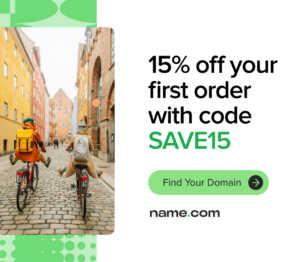 Thinking about starting a podcast? You’re not alone. As of 2024, there are more than 5 million podcasts online (Backlinkto).
Thinking about starting a podcast? You’re not alone. As of 2024, there are more than 5 million podcasts online (Backlinkto).
That may feel like a massive number, but the market’s not oversaturated yet—listener numbers continue to grow (Statista). In other words, there’s still room for your ingenious podcast episode idea.
Whether you’re an individual looking for a side hustle, a startup founder, or an integral part of a brand’s marketing department, you can produce a show or successful podcast that helps you reach your goals. All you need to do is learn how to start a podcast.
Why start a podcast? Exploring the benefits.
There’s a reason why there are so many podcasts out there: They come with significant benefits for solopreneurs, big businesses, and everyone in between.
With a podcast, you can:
- Engage your audience – As of 2023, 42% of Americans above the age of 12 listened to at least one podcast in the past month (Pew Research Center). And it’s not just the U.S.; globally, there are more than 500 million podcast listeners (Statista). Your potential audience is out there.
- Establish niche authority – A podcast is an opportunity to dive deep into a topic you understand. For businesses, a podcast, like a blog, is an exceptional way to establish industry credibility with your potential listeners.
- Earn a living – Simply put, podcasts can bring in cash. From sponsorship to merch, there’s plenty of money to be made for a podcast host—especially when you consider the relatively small time investment that podcasting requires.
Best of all, there’s room for every kind of podcast topic or production. From The Basement Yard (a two-man comedy podcast) to the full-scale operation of Bon Appétit Magazine’s Dinner SOS show, successful podcasts come in all shapes and sizes. If they can do it, you can too.
7 steps to starting your podcast
So, how do you get started? It’s easier than you think. Here are seven steps to launching a podcast.
1. Finding your voice: Crafting your podcast identity
First things first: Who are you? And, more importantly, why should people care about your podcast?
Think about your voice and perspective as you brainstorm for your podcast. That voice should be your guiding light, defining everything from your theme and tone to your podcast name and target audience.
Who you are should also inform your podcast topic. In other words, you’ll want to find something you can:
- Talk about extensively
- Talk about expertly
- Tie into what you’re selling seamlessly (if you’re a brand)
Once you’ve answered those big-picture questions, you can focus on the day-to-day stuff, like format and frequency.
Decide on your podcast format—interview, discussion, or solo—to align with your target audience’s needs. Use an outline to ensure you cover all critical points for your podcast episode.
Will you do solo episodes, interviews, discussion panels, or a mix? (Don’t worry—you can always switch it up as you discover what resonates with your audience.)
2. Technical setup: Equipment and software essentials
Next, you’ll need gear. Luckily, you don’t have to break the bank. All you need to start recording is a computer and:
- A microphone – While the mic on your phone or laptop can work in a pinch, you’ll enjoy the best sound quality from a standalone microphone. For ease of use, look for a USB microphone you can plug directly into your computer, and don’t forget the stand.
- A mixer – If you plan to have guests, you’ll need the ability to use multiple microphones. For that, you’ll need a mixer and an audio interface. Focusrite and M-Audio are two established audio brands that make affordable options. (You’ll also need two or more microphones with XLR cables.)
- A pair of headphones – To monitor your audio in real-time, you’ll need headphones. Any brand will do.
- A digital audio workstation (DAW) – A DAW is an audio editing program. If you have a Mac, GarageBand comes with your device; for Windows, Audacity is a free-to-download option.
Setting up your Podcast Equipment
Choose a Quiet Location: Minimize background noise by selecting a quiet room for recording. . Any quiet, distraction-free space can act as your studio—experiment in your bedroom, living room, or office.
Equip Properly: Make sure that your podcast equipment, such as your USB microphone and audio interface, is in good working order. Position your microphone correctly to capture clear sound, which is crucial for engaging your podcast listeners and increasing podcast downloads.
3. Content creation: Recording your first episode
Now that you have the basics, it’s time to dive into the content itself. This brings up the ultimate podcasting question: Do you go scripted or unscripted?
Ultimately, it depends on your show. For an informative podcast, you may want a script to ensure you nail all the facts and quotes.
For more of a discussion-based show, you may not need a script for you and your guests. However, if you decide to take the free-talking approach, consider creating an outline. That way, you can make sure you hit all of your must-discuss points.
From there, simply press record and start talking!
Recording techniques for quality audio
- Speak Clearly: Ensure your audio is easy to understand by speaking at a consistent pace. Use a pop filter to reduce sharp sounds if needed.
- Optimize Acoustics: Record in a space with soft furnishings to help absorb sound, enhancing your audio file and podcast recording quality.
Choosing the right editing software
After your content is recorded, you can start editing. Select an editing software like Audacity or Adobe Audition that allows you to cut errors, manage background noise, and enhance audio clarity. These features are vital for producing a successful podcast.
You can also give your podcast a more polished edge by muting breaths and mouth noises in your DAW, as well as removing dead air and mistakes.
Add audio enhancements
The best podcasts combine speech with a score and FX to enrich the listener’s experience, such as:
- A theme song or intro music
- Royalty-free background music
- Sound effects
Using sound effects, adding music, and having a distinctive intro and outro can make your podcast stand out.
Finalizing and uploading to a podcast hosting service
After editing, export your podcast episode as an audio file and upload it to a podcast hosting service like Podbean or Anchor, which can facilitate distribution and increase your podcast downloads.
4. Launching your podcast: Hosting and distribution
Your first episode is now ready. To share it with the world, turn to podcast hosting services. These services share your podcast with all the major platforms, such as Spotify, Apple Podcast, and Google Podcast.
While there are countless hosting platforms, some of the best free podcast directory options include:
- Podbean
- Acast
Design engaging podcast cover art and podcast artwork that attracts podcast listeners on various podcast hosting platforms.
That said, it’s not enough to publish your podcast. Your listeners will also need somewhere to find you outside of these platforms.
That’s why you need a podcast website—a place to combine all your socials, merch links, and other drivers of growth. Think of your website as your home base.
Start by doing a domain name search for your podcast name. Secure your name with a relevant TLD such as .audio, .live, .productions, .show, .stream, or .watch, and then create your site with a powerful website builder, like Wix. Now, your fans will have somewhere to support you directly as an alternative to your chosen podcast platform. Additionally, you can promote your site on socials using Hopp as a link in bio solution.
5. Marketing and growing your audience
With so many podcasts out there, your challenge is to convince listeners to try yours. In a sense, marketing a podcast is like marketing any other product. To that end, here are some tried and true strategies for growing your audience:
- Share with friends and family – Your first listeners can come from your immediate circle. Sharing your podcast with friends and family is a great way to gain initial support and feedback. They can also help spread the word to their networks, giving you an early boost in listeners.
- Social media – Along with building a website, create TikTok, Instagram, Facebook, and X accounts for your podcast and leverage social media strategies. Be sure to post frequently to build an audience, and consider leveraging paid ads to drive traffic to your podcast. Use Hopp as a link in bio solution to make it easy for your customer base to find your library of podcast episodes.
- Guest spots – Another way to find listeners is to be a guest on other podcasts in your niche. Try contacting the creators of your favorite shows and see if they’ll have you on. If their fans like you, they might check out your podcast after. Additionally, inviting guest speakers to your podcast can attract their followers and provide valuable content for your listeners.
- Website strategies – When you have a website, you can engage in SEO (search engine optimization) strategies. Must-implement tactics include adding high-value keywords to your copy, using descriptive headers, and writing meta descriptions. Fortunately, the Wix platform helps ensure you’re leveraging all of these SEO tactics.
6. Monetization: Turning your podcast into a business
As your audience grows, you may be able to start earning money from your podcast. In fact, there are several avenues for revenue generation in podcasting:
- Sponsorships – Have you ever heard an ad read in the middle of your favorite podcast? That person was getting paid. You, too, can earn money podcasting by partnering with brands. In the beginning, you may need to approach brands with a pitch deck and media kit to land sponsors. As you grow, you may have brands approach you instead.
- Merchandise – From t-shirts to tote bags, merch is one of the biggest revenue drivers for podcasts. You’ll sell even more if you can make unique merchandise that ties in with your show.
- Premium content – Some podcasters use platforms like Patreon to create gated content. Superfans can pay a monthly fee to access exclusive episodes, behind-the-scenes footage, or video versions. Be creative with what you offer, and watch the revenue roll in. It’s common practice to post shorter versions of your podcasts or videos on YouTube to spark excitement and then lead them to your Patreon for the full content. This strategy can be especially effective when you are starting out and growing an audience.
7. Measuring success: Analytics and feedback
As your podcast generates plays, you’ll start to learn more about your listeners. Responding and adapting to these clues is the key to running a successful (and profitable) podcast.
Through your podcast hosting platform, you’ll be able to see valuable audience insights like:
- Age
- Gender
- Geographic location
You can also track essential metrics such as:
- Downloads
- Listens/streams
- Shares
- Follows/subscriptions
Use these audience metrics to fine-tune your marketing. For example, if your podcast starts picking up in Canada, you can spend more on advertising your merch there.
You can also use your podcast host to track plays per episode, followers, and audience size.
Keep in mind that you can also learn from your listeners. As you grow, fans and critics may respond to your social posts or email you with feedback. Take that feedback into account—after all, those are the people who will drive up your play count and pay your bills.
Ultimately, by studying metrics and feedback, you can put your podcast on the right track.
The tools you need to start your podcast today
Starting a podcast is an adventure you can absolutely embark on. Pick a name and topic, build out content, share the word, and soon, you’ll have a flock of fans hanging onto your every word.
If you’re ready to get started, Name.com has the tools you need to make your podcast professional. From Wix website builder to professional email solutions, you can take your idea from a passion project to a profitable podcast.

